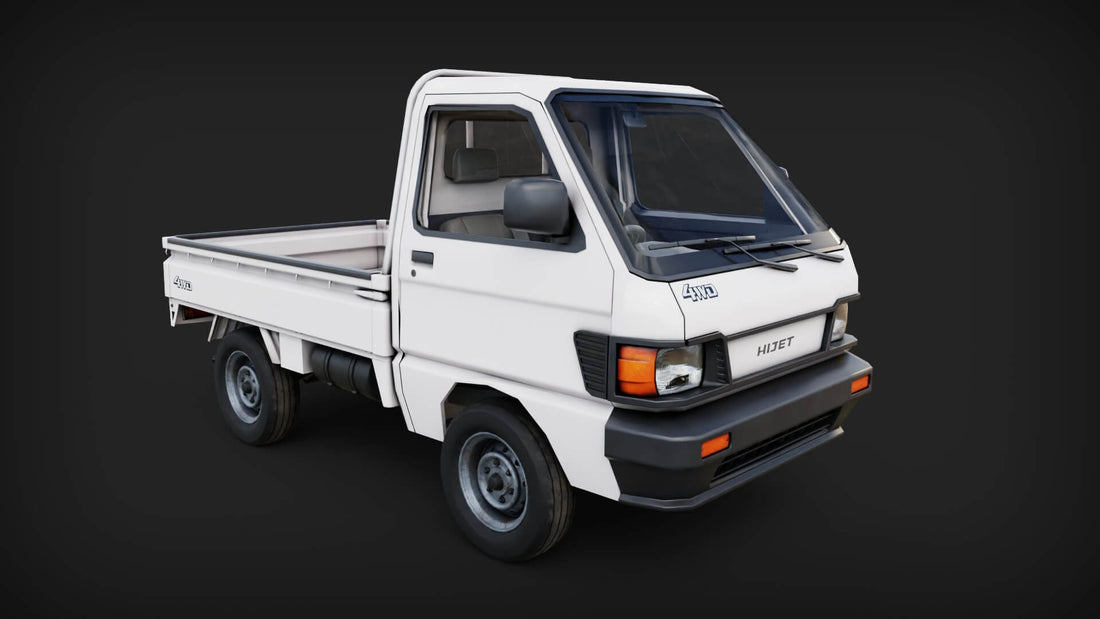In the realm of compact vehicles, Kei trucks stand as a testament to innovation, efficiency, and adaptability. These diminutive yet robust workhorses have been an integral part of Japan's automotive landscape for decades, and their influence is increasingly being felt on a global scale. To truly appreciate the marvel that is the Kei truck, we must embark on a journey through time, tracing their origins, evolution, and the enduring impact they've had in the automotive world.
The Birth of Kei Trucks
The story of Kei trucks begins in the early post-war years of Japan when the nation was on the path to recovery and rebuilding. In the 1940s, Japan was grappling with limited resources, and economic constraints necessitated the development of an economical and practical mode of transportation. In response to these challenges, the Japanese government introduced regulations that would lead to the birth of Kei vehicles, a term that roughly translates to "lightweight" or "small."
These regulations, initially known as the "Keijidosha" (light vehicle) regulations, were first implemented in 1949. They imposed strict limits on vehicle dimensions, engine displacement, and overall weight, with the aim of promoting fuel efficiency and reducing the demand for materials like steel. This set the stage for the creation of compact vehicles that would later become Kei trucks.
The Pioneers: Early Kei Truck Models
One of the earliest pioneers in the Kei truck arena was the Subaru 360 Sambar, introduced in 1957. This compact vehicle featured a 2-cylinder, 2-stroke engine and a distinctive design that would become iconic in the Kei truck world. Subaru's Sambar quickly became a familiar sight on Japanese roads, serving as a practical solution for small businesses, farmers, and urban commuters.
Not to be outdone, other Japanese automakers like Daihatsu, Suzuki, and Honda joined the race to produce efficient Kei trucks. Each manufacturer put its own unique spin on these vehicles, contributing to the diversity and versatility of the Kei truck market.
Evolution in Design and Functionality
Over the years, Kei trucks underwent significant transformations in terms of design and functionality. They evolved from basic, utilitarian vehicles to more sophisticated and adaptable machines. Improvements in engine technology, safety features, and comfort made Kei trucks increasingly attractive to a wider range of users.
The introduction of four-wheel drive (4WD) and all-wheel drive (AWD) systems expanded the off-road capabilities of Kei trucks, making them invaluable for agricultural work, forestry, and outdoor enthusiasts seeking adventure on rugged terrain.
Kei Trucks Today: A Global Phenomenon
Today, Kei trucks have gained recognition not only in Japan but also in other parts of the world. Their compact size, efficiency, and affordability have earned them a dedicated following among practical-minded individuals and businesses.
Enthusiasts have embraced Kei trucks for their customization potential. These compact vehicles have been transformed into mini-campers, food trucks, mobile cafes, and more, showcasing their adaptability and versatility.
The Future of Kei Trucks
As the automotive industry continues to evolve, Kei trucks are not standing still. Manufacturers are exploring ways to enhance their eco-friendliness, incorporate advanced safety features, and improve overall performance. Electric and hybrid Kei trucks are on the horizon, promising even greater efficiency and lower environmental impact.
The history of Kei trucks is a testament to the power of innovation in response to unique challenges. From their humble beginnings in post-war Japan to their present-day global presence, Kei trucks have continually adapted and evolved, leaving an indelible mark on the world of compact vehicles. As they continue to evolve and innovate, it's clear that these small yet mighty vehicles will play a significant role in the future of sustainable and efficient transportation.



